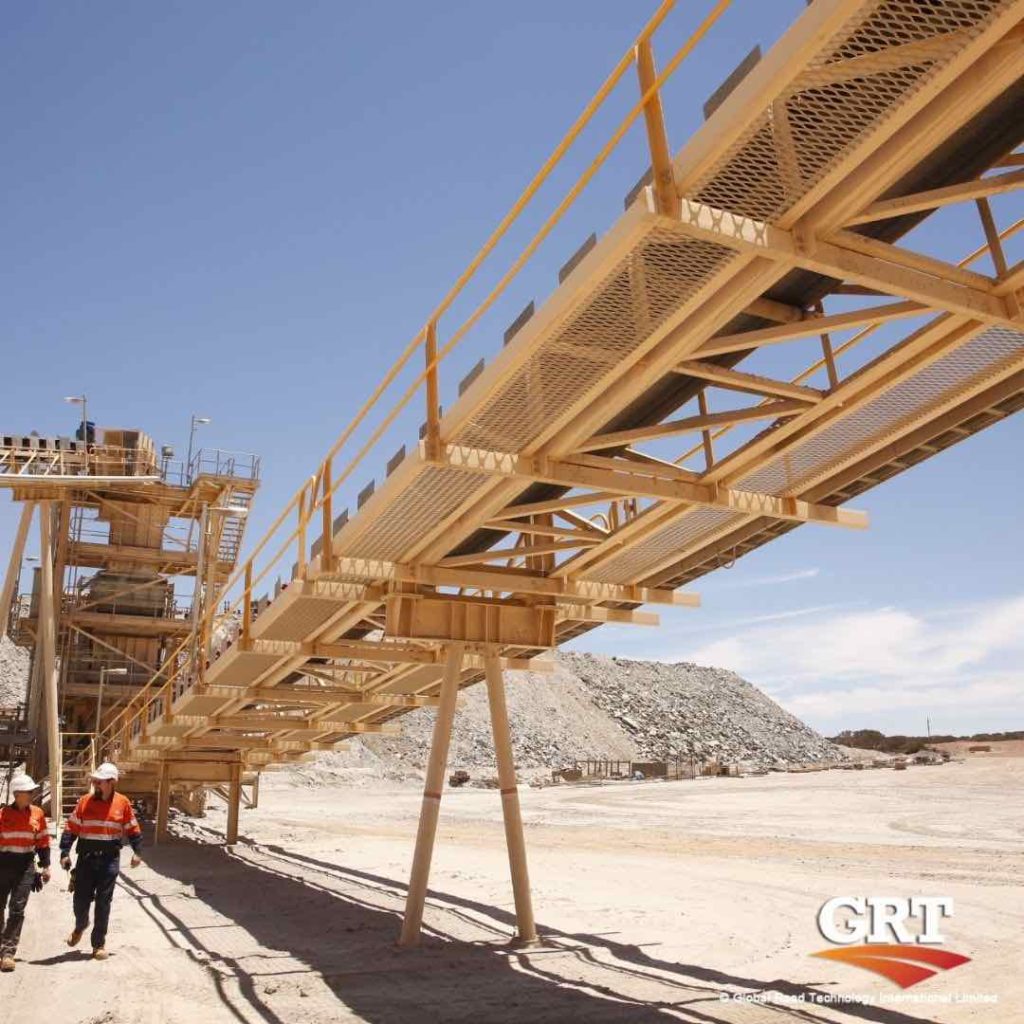Conveyor systems are everywhere in the industrial world. From agriculture to airports, mining to mail rooms, conveyors are critical for moving products and items from a to b. In two of those scenarios, namely agriculture and mining, conveyors often kick up large amounts of dust, which can be hard to control and harmful to health. Input and transfer chutes generate dust, where the material is put onto or leaves the belt, and the wind on uncovered conveying systems can also blow it off.
In the modern world, we understand the effects that dust can have, from wearing on machinery and environmental damage to product waste and, most importantly, the issue of dust inhalation.
Dust inhalation can lead to potential respiratory problems like pneumoconiosis (black lung disease), silicosis, and eye and skin irritation.
Long-term exposure to dust can also increase the risk of lung cancer and other disease variants.
Learn more about conveyor belt types and causes of dust in our industry article on conveyer and transfer point dust.
Are environmental regulations, health and safety concerns or potential profit loss a concern right now?
Methods for controlling dust on conveyor systems
Dust suppression on conveying systems can take many forms, with each measure usually tailored to the situation and industry.
A few examples are:
- Water Sprays: Water is an effective way to suppress dust on conveying systems. Water sprayers can be seated along a conveyor belt to wet the material, reducing dust emissions.
- Enclosures: Enclosing the conveyor system to protect its cargo from wind is another valid dust suppression method. It is simply done by installing a cover over the conveyor belt or building a structure around the system.
- Air Filtration: Air filtration systems can be installed to capture dust particles before they are released into the air. These systems can be placed at the discharge point of the conveyor or along the conveyor belt.
- Vacuum Systems: Vacuum systems can suck dust particles from the conveyor belt. Vacuum arrays are installed at the conveyor’s discharge point or along the travel line.
- Additives: Dust suppressants or binders are often added to the material conveyed, helping decrease dust emissions. These additives, like those supplied by GRT, can be added directly to the material or sprayed onto the belt.
- Regular Maintenance: Regular maintenance of a conveying system can also help to reduce dust. Tasks can include cleaning, tightening loose parts, and ensuring that the components are in good order.
While there a no specific dust control regulations for conveyer systems in Australia, broader mining regs apply.
Conveyor dust suppression – Fog cannons vs GRT Dust suppression systems
Fog cannons are regularly in use as dust suppressants on mining conveyor systems.
However, dust particles are hydrophobic, meaning the fog’s fine mist only acts as a barrier and won’t capture the dust and drop it out of suspension.
This makes traditional water-based methods and fog cannons less effective for conveyor dust suppression due to the high surface tension of H2O.
Moreover, Fog cannon systems are energy-intensive and need to use electricity or generator sets (petrol or diesel) to power high-pressure water pumps and high-powered turbine fans that convert water into an atomized mist via nozzles.
The solution?

To improve conveyor dust suppression, GRT implements a combination of chemistry and particle size in making water work for conveyor and transfer point dust suppression.
- GRT: Activate
- GRT: Ore-Loc
GRT implements a combination of chemistry and particle size in making water work for conveyor and transfer point dust suppression. GRT products such as GRT Activate suppress dust by wetting the material to optimal moisture content, preventing fines from being carried off into the air, or to the air above the material, to return airborne fines to the material bed. The incentive to use GRT products is that the material does not have to be handled again. The suppressed dust returns to the main body of conveyed material and on into the process, without requiring additional material handling equipment. GRT: Ore-Loc provides an exceptional surface coating/crusting solution on all ore and material surface types reducing wind-borne material loss.
Summary
Dust suppression on conveyor systems is a must-have for environmental, material and health control.
Traditional methods revolve around constant water spray, which is proven to be inefficient.
GRT’s lab-tested dust control additives can be used with existing technology to improve the performance of your dust suppression system significantly.
This leads to improved air quality and worker safety in mining areas while reducing wear and tear on equipment and minimising lost material.
Dust suppression is a persistent issue in the world of mining and resources.
Learn more about GRT’s industry-leading and interconnected SMART Dosing Units, and discover how we’re driving more innovative dust suppression solutions for industries!
Your feedback is important to us.
Your feedback is important to us. If you enjoyed reading this Global Road Technology industry update and found it informative, please let us know by leaving a REVIEW.
Troy Adams
Troy Adams is the Managing Director of Global Road Technology (GRT) Specialising in Engineered Solutions for Dust Suppression, Erosion Control, Soil Stabilisation and Water Management. A pioneering, socially conscious Australian entrepreneur, Troy Adams is passionate about health and safety and providing innovative solutions that are cost-effective to the mining industry, governments and infrastructure sectors. Troy is also a tech investor, director of companies like Crossware, Boost, Hakkasan, Novikov and more.

